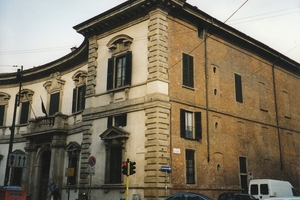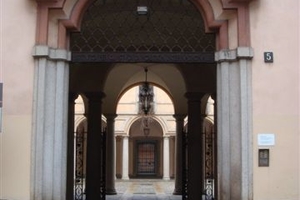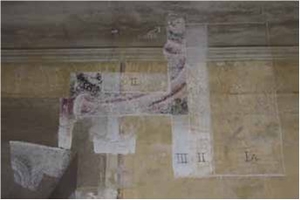'600 - '700
From 1535 to 1713 Milan was occupied by the Spaniards: the status of “occupied territory” continued, with changing fortunes, after the War of the Spanish Succession (1701–1714), and also with the Austrian occupation, until the Second Italian War of Independence, although with the short period of Napoleonic occupation. For this reason, Milan probably holds the Italian record for longest foreign occupation.
The restoration works we are presenting concern monuments built between the XVII and XVIII century up to the Napoleonic Era. During these years the town shows, in sync with the Western world, the distinguishing Baroque and Neoclassic features, often with local and original characteristics: a rich period of aesthetic and technical innovations regarding materials, construction techniques and new decorative setups.
A slow but gradual urban development, initially contained inside the town walls wanted by Charles V, participated to the development of the major works altready started at the end of the XVI century , like the Seminario Vescovile (the Bishopric Seminary), Brera Palace, the Collegio Elvetico (the Swiss School), and the continuation of other works such as the Duomo - Milan cathedral - always at the core of the architectural debate - the Cà Granda and the massive realization of hydraulic works aiming to complete and improve Navigli (Milan canal system) waterways. The town was filled with a constellation of new aristocratic buildings, such as Palazzo Litta, Palazzo Dugnani, and new churches like Sant’Alessandro, Santa Maria alla Porta, San Bernardino alle Ossa and San Vito al Pasquirolo.
In the late XVIII century, after a long period of peace and knowledgeable and steady administration, Milan was considered a farsighted town, driven by his economic and cultural growth. The heritage of this period can be seen in significant artworks such as, among others, the Rotonda della Besana, the Scala, Palazzo Reale, Palazzo Cusani, Palazzo Clerici, Villa Belgiogioso, Palazzo Serbelloni, the Arena Civica and also the first public green areas among which we have to mention the important compound of Villa Reale in Monza.
Arch. Libero Corrieri
Commission for the Architectural and Landscape Heritage of Milan
Highlights

The construction of The Senate Palace began in 1608 during the Counter-Reformation era: it was erected as “Swiss College”, i.e. a Swiss seminary college for the education of Swiss priesthood.
Read more »

Clerici Palace is located at number 5 of the street carrying the same name, among the XVII century buildings of Contrada del Prestino dei Bossi (Quarter of Bossi Bakery). The building itself is a typical example of late baroque architecture and still one of the most rich and splendid dwellings of the XVIII century, despite the various losses and tamperings suffered during the XIX and XX century.
Read more »

Works carried out in Villa Crosti-Colombo were strongly characterized by conservative restoration principles, in accordance with the complex history of the building and taking into consideration all evidences of the past free from personal or aesthetical censoring.
Read more »

Restauro cancellata posta a chiusura della Corte dei Nobili
Read more »








